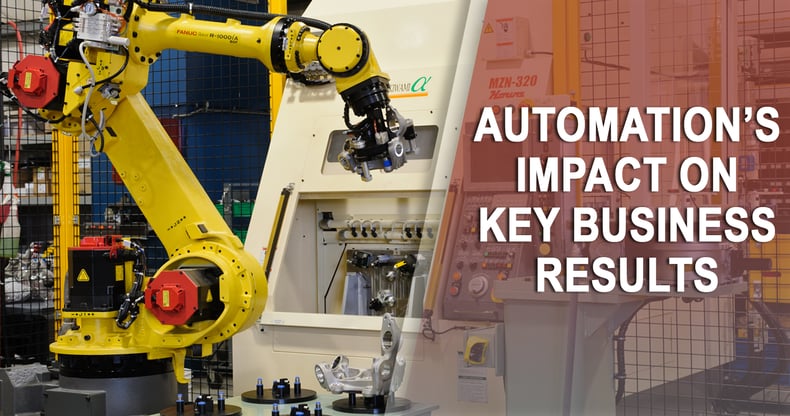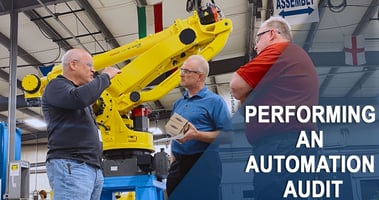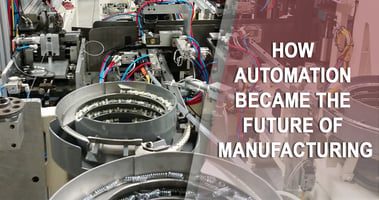As executives increasingly comprehend the business value inherent in automated solutions for...
What Every Manufacturing Executive Should Know About Automation’s Impact on Key Business Results

Technology is everywhere. When it comes to staples in your life like your smartphone, your TV, or your car computer, the tangible gains are obvious and immediate. When you’re talking about the business of manufacturing, however, there’s likely to be more ambiguity about whether technology is worthwhile. In other words, what can it actually do for the company’s bottom line?
So let’s forget about the science and specification of automation for a moment, and get right to the heart of what really matters most to manufacturing executives: improving profits and driving growth. If your job revolves around achieving either or both of these goals, it’s fundamentally important to understand the role automation can play in making that happen.
Here’s what you need to know.
The Basic Automation Equation
The value of automation, quite simply, is its capacity to increase revenue while decreasing operating costs. When you automate the right processes within your manufacturing organization, you have the unique opportunity to get more product out the door while reducing labor costs and the high expense of scrap. The bottom line is that automation can significantly boost your bottom line.
Here are just a few of the business KPIs that stand to see compelling results from a smart investment in automation:
- Production Volume
- Production Availability
- Production Costs
- Overall Equipment Effectiveness (OEE)
- Capacity Utilization
All of this equates to data measurements that reflect a healthy P&L, diminished operating expenses, and greater revenue generation. There’s not a manufacturing executive out there that doesn’t want to see those kinds of outcomes.
Solving the Labor Conundrum
When you're seeking ways to grow your business, there are challenges to be faced—perhaps none quite as common or frustrating as the inability to source necessary labor. The truth is we’re already beginning to see a more technically skilled workforce emerge, so finding the manpower to fill non-skilled roles in repetitive, unfavorable, and often high-risk manufacturing environments is a major hurdle.
Drilling Down on Key Business Results
Labor reduction is an integral advantage of automating one or more manufacturing processes, but it’s only a fraction of the positive outcomes you can expect to see. To help you get a more complete idea of which key business results automation impacts, take a look at this breakdown:
- Lower operating costs: As mentioned, automation reduces the need for human interaction, which cuts down on the major expense of employee compensation.
- Less scrap: An automated machine doesn’t tire or lose focus, and it isn’t prone to dropping items, getting distracted, or forgetting a step in the process. As such, it greatly reduces scrap and waste, which can come with a high price tag.
- Greater throughput/output: Automation can operate three shifts per day, seven days per week, and 52 weeks per year without fatigue, only pausing for changeover and regular maintenance.
- Higher revenues & profits: As automation enables you to speed up output and reduce overall labor costs, all while limiting scrap, the effect on your bottom line becomes clear and present.
These business results are not just theories; they can actually be measured. In fact, some automated systems are designed to tie into manufacturing execution systems (MES), which monitor the factory floor and report on the outcomes.
What to Bring to the Automation Table
Now that you understand what can truly be gained by adopting automation, it’s time to start thinking about the smartest, most profitable ways to implement. And for the most part, that’s an effort best managed under the guidance and partnership of a professional integrator.
You don’t have to know which areas of the manufacturing process are ripe for automation. An experienced integrator will walk you through an automation audit, examining your processes, asking questions, identifying opportunities and then ranking them based on priority. They have the technical acumen to make design recommendations that bring you the most benefit and help solve the company’s pain points, whether that be safety/ergonomics, cost, labor savings, etc.
What you bring to the table is an understanding of the bigger picture, a.k.a the business plan or annual operating plan. And you know what’s most important to the company in terms of revenue and expenses, profit and growth. Informing the automation audit through this perspective is critical to pinpointing automation opportunities that will reap desirable ROI and support the business’s objectives.
It doesn’t have to be all or nothing. In fact, it’s rare that a company makes an operation-wide plunge into automation. Finding the right balance of what and how much to automate comes down to your investment capital, risk evaluations, and ROI expectations.
Instead of completing everything at once, you might look at it from a two- to three-year approach, tackling 15%-20% of the desired automation integrations with an initial phased rollout. This gives you the time to learn, build your staff to run the technology, and maximize its potential. In the next phase, you have more knowledge, less initial investment, and minimized risk. Ultimately, an automation integrator helps you prioritize these automation opportunities to align with your unique goals.
Learn more about making smart automation decisions to drive value for your manufacturing organization in our free guide, 7 Ways Automation Makes Manufacturers More Competitive.



